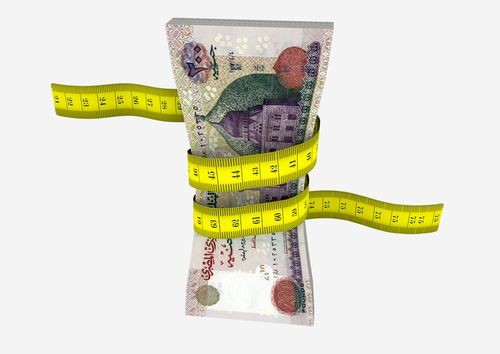The Egyptian economy faces head winds
The unemployment rate has jumped to 7.2 per cent, and the Egyptian pound has fallen against the US dollar. What is happening to inflation? Ahmad Abdel-Rahman explains.
Recent official data showed that the unemployment rate in Egypt increased during the second quarter of 2022 by 1.7 per cent on an annual basis, or 7.2 percent of the total labour force, according to Egypt's Central Agency for Public Mobilization and Statistics (CAPMS). Unemployment reached 2.151 million in the period from April to June 2022, compared to about 2,145 million in the first quarter of this year. It registered a slight increase of 0.3 per cent on a quarterly basis. On an annual basis, the number of the unemployed increased by 36,000 compared to the same quarter of the previous year. This is a rise of 1.7 per cent.
Available data indicates that the activity of the non-oil private sector in Egypt continued to contract rapidly in July 2022. The impact of high inflation has severely curbed demand and production, according to the Purchasing Managers' Index issued by Standard & Poor's Global. The non-oil private sector in Egypt recorded its largest decline in two years in June 2022. This sector shrank very rapidly along with declining demand. This is a consequence of supply-side pressures, the depreciation of the Egyptian pound against the dollar, and rising inflation
However, business activity fell at a slightly slower pace last July compared with July 2021, amid signs of a decline in inflation, although the performance was among the weakest since the Corona pandemic hit the economy in the second quarter of 2020. The index rose to 46.4 points in June, up from two-year low of 45.2 points last June. This marked the largest increase in the index in nearly a year, although it is still below the 50-point barrier that separates growth from contraction. This is the 20th consecutive month that the private sector in Egypt has contracted.
2,151 million unemployed
CAPMS data indicates that the labour force recorded about 29,985 million workers during the second quarter of 2022 compared to about 29,895 million workers during the first quarter of this year, an increase of about 0.3 per cent. The urban labor force reached about 13,191 million, while in the countryside it reached about 16,794 million. At the gender level, the size of the labour force for males reached 24.850 million individuals, while for females it reached 5,134 million.
The percentage of the unemployed among 15 to 29's reached about 61.3 per cent of the total unemployed. This included 7.1 per cent among 15 to 19 year olds, which increased as much as 8.4 per cent for males and 5.5 per cent for females. This compares to 8.2 per cent in the previous quarter. The percentage of the unemployed among 20 to 24 year olds reached 27.6 per cent, and 38.6 per cent for 30 to 64 year olds.
Unemployment rate in urban areas
The urban unemployment rate was 10.6 per cent of the total labor force. And it was 10.5 per cent during the first quarter of 2022, compared to 11.2 per cent for the same quarter of the previous year. The unemployment rate in the countryside reached 4.5 per cent of the total work force, compared to 4.1 per cent during the same quarter of the previous year.
The percentage of those unemployed who are holders of intermediate or above-average qualifications, school graduates and university degrees, reached 82.2 per cent, compared to 83 per cent for the first quarter of the year. This percentage is distributed among 38.1 per cent of holders of intermediate and above-average qualifications and compares to 37.6 per cent during the first quarter, and 37.8 per cent during the same period in 2021. The unemployment rate among holders of university qualifications and above reached 44.1 per cent, compared to 45.4 per cent during the first quarter of this year, and 43.9 per cent during the same period last year.
In contrast, the number of employed reached 72,834 million, compared to 27,750 million in the first quarter of this year. The number of urban employed reached 1,792 million, while the number of rural employed reached 16.042 million.
The rate of contribution to economic activity amounted to 42.6 per cent of the total population, compared to 42.8 per cent during the first quarter, and 41.9 per cent during the same period in 2021. The male contribution rate was about 69 per cent, compared to about 69.3 per cent during the first quarter, while it was 67.7 per cent during the same period last year. The female contribution rate was 15 per cent, compared to 15.2 percent during the first quarter. This compares to 14. 5 per cent over the same period last year.


Comments